The very first sight that comes in our mind when we imagine Durga Puja is that of a well-armed deity riding a lion holding a trident pointed towards demon, symbolizing the victory of good over evil. Listed below are some of the must know facts about this event:
1. Worshiping of Mahishasura Mardini
Durga Puja commemorates Prince Rama’s offering to Maa Durga before going to war with the demon king Ravana. Lord Rama first worshiped the ‘Mahishasura Mardini’ (the other name for the Goddess) or the assassin of the buffalo-demon, by offering 108 blue lotuses and lighting 108 lamps.
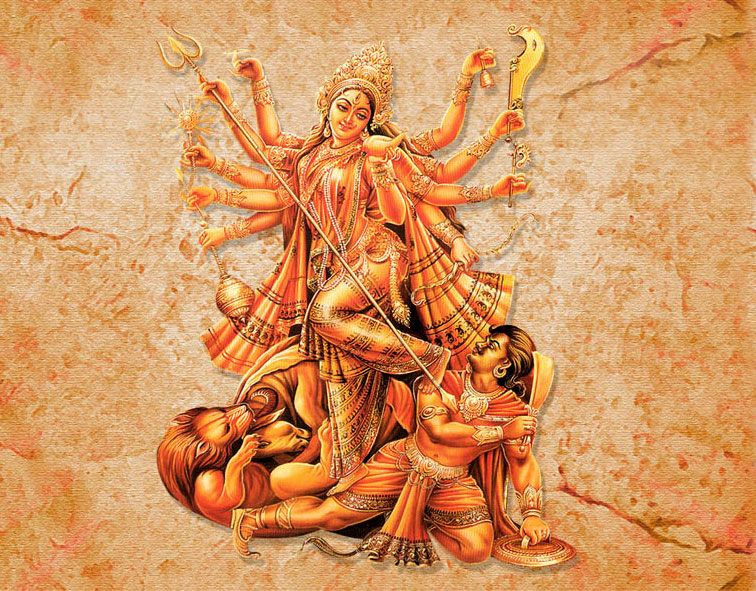
2. It was Basanti Puja
Originally, Durga Puja was celebrated during Spring as Basanti Puja. The ritual during autumn (September-October) is different from the conventional one. So, this Puja is also known as ‘Akal-Bodhan’ or out-of-season (‘Akal’) worship (‘Bodhan’).
3. Different forms of celebrations in different states
The period of Durga Puja is celebrated as Garba-Dandiya in the western part of India, as Ramlila in the north and as Golu or Bonalu down South. Only in eastern India it is celebrated as Durga Puja.
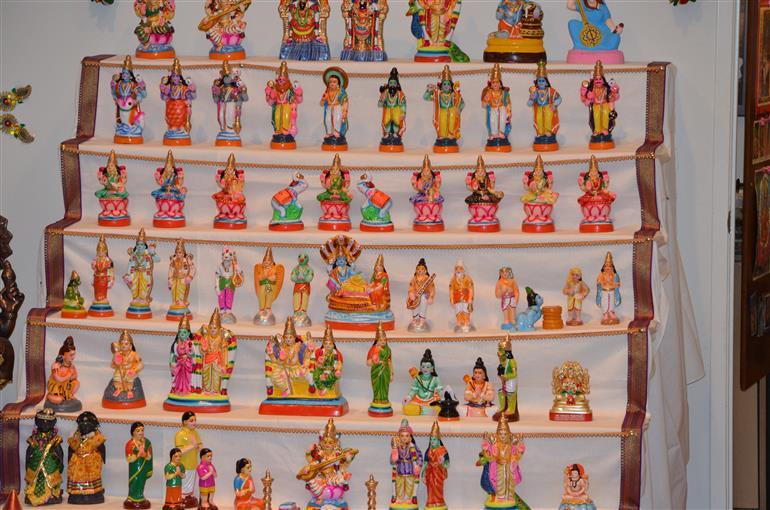
4. Interesting Ways West Bengal celebrates it
West Bengal is the hub for this festival. The first Durga Puja in Bengal was held by the zamindars of Dinajpur and Malda during late 1500 and early 1600. ‘Baaro yaari’ or twelve friends or the Sarbojanin Puja was conceptualized in 1790 in Hooghly, while it hit Kolkata in 1909.
5. Devi Paksha
‘Devi Paksha’ (Fortnight of the Goddess) exists during this phase. It marks the end of ‘Pitri Paksha’ which is dedicated to deceased forefathers. It is said that Maa Durga alongwith her children starts her journey towards the earth on the first day of the Devi Paksha period.
6. Soil from the brothel
The soil in front of a brothel is considered to be highly pure. It is believed that while entering a brothel, a man leaves behind all his purity at the threshold of the brothel thereby making it highly virtuous. To make Goddess Durga’s idol this pure soil is begged from a brothel and is used in carving the idol.
7. Forms of Pratima/Idols
Various forms of pratima or idol are available in the market during Durga Puja. The oldest and most conservative form is known as ‘Daaker Saaj’. Imported beaten silver or rangta’ from Germany was used for decorating the idol. Since it was delivered by the postal service or ‘Daak so it uses the name Daaker Saaj.
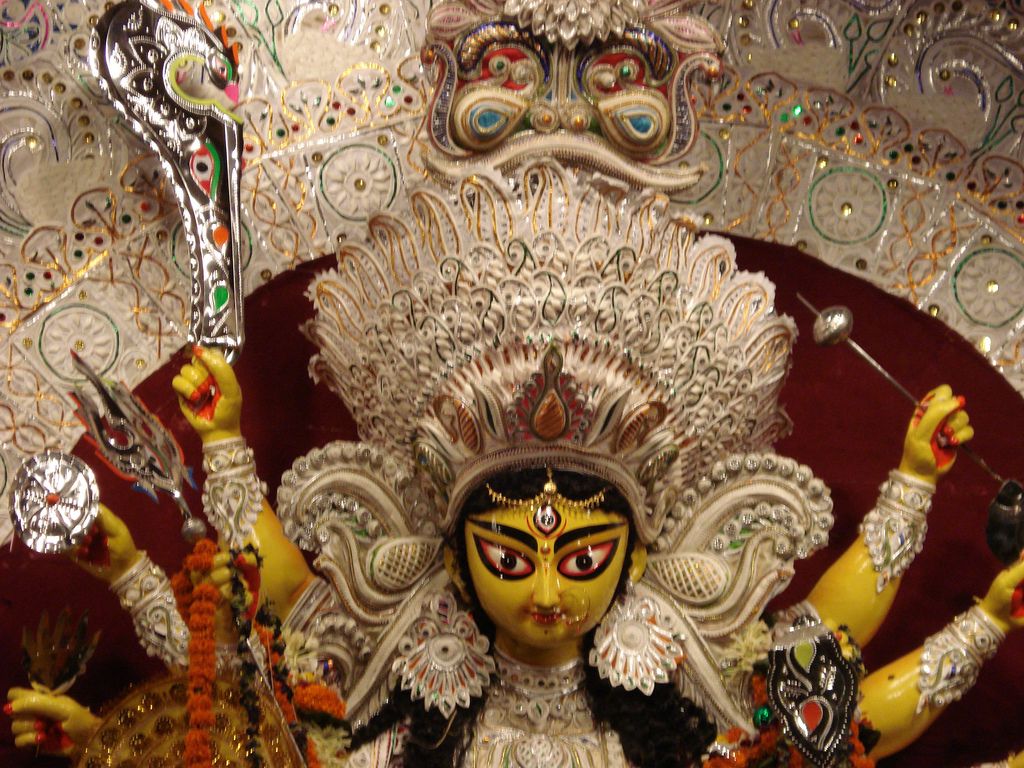
8. Preparations of Kola Bou
‘Kola Bou’ or the tree bride, more popularly known as Lord Ganesha’s wife, is prepared by adorning a banana plant. On Saptami, the seventh day of Durga puja, Kola Bou is bathed in the morning as a part of rituals and placed on the right side of Maa Durga’s son, Ganesha.
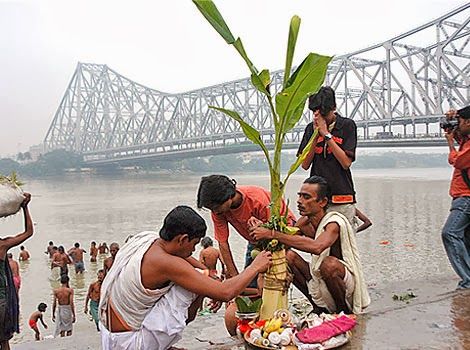
9. Tradition of Kumari Puja
‘Kumari Puja’ (worshipping young and ‘eligible’ girls), is a tradition started by Swami Vivekananda in 1901 in Belur Math. Kumari Puja is an inherent part during Durga Puja and signifies the divine feminine power. Food and gifts are offered to young girls by those who observe fast.
10. Special Food – Khichdi
During Durga Puja khichdi is cooked in a distinct flavor. It forms the blog or offering to the Goddess in the form of food. The journey of Durga Puja from a household ritual to community practice has redefined the preparation and distribution of bhog. Nowadays, packed bhog is available and delivered at doorsteps.
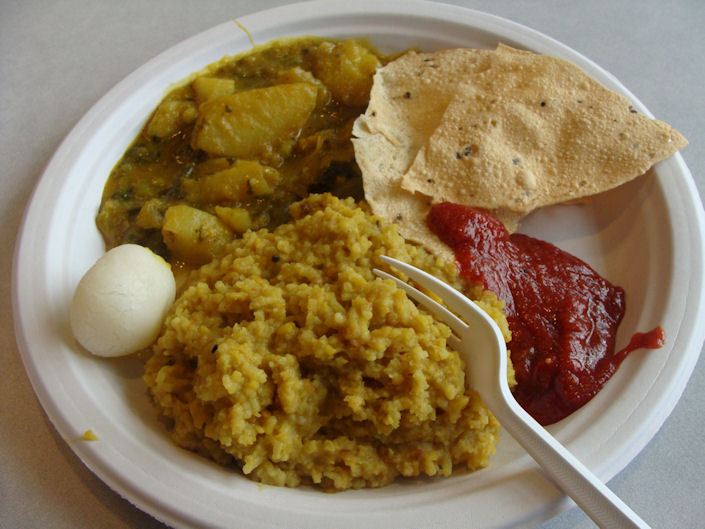
Gods Worshipped in Bengal Apart From Maa Durga
Comments
Powered by Facebook Comments
